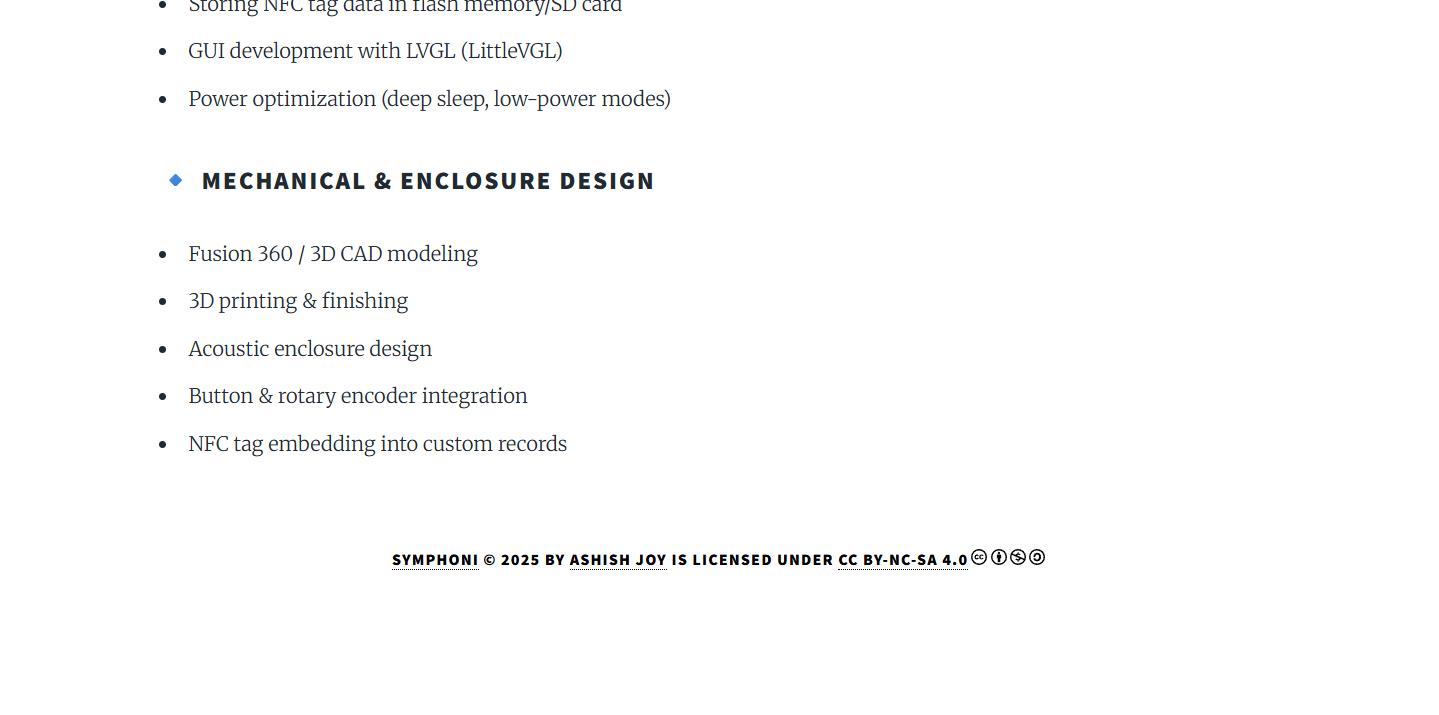Invention, Intellectual Property, and Income
This week, we explored the intersection of invention, intellectual property, and income generation. We delved into how to protect our inventions through various forms of intellectual property rights, such as patents, copyrights, and trademarks. Additionally, we discussed strategies for monetizing our inventions and the ethical considerations involved in doing so.
Invention
Invention is the process of creating something new or improving an existing product, process, or service. It involves identifying a problem or need and developing a solution that addresses it. Inventions can take many forms, from physical products to software applications, and can have a significant impact on society and the economy.
Ready, Fire, Aim
This is a principle that Neil introduced during the class, which I found to be really fascinating. It emphasizes the importance of taking action and iterating on ideas rather than getting stuck in the planning phase. The idea is to start with a rough prototype or concept, test it, and then refine it based on feedback and results. This approach encourages innovation and adaptability, allowing inventors to learn from their mistakes and improve their inventions over time.
The "Ready, Fire, Aim" approach is particularly useful in the fast-paced world of technology and innovation, where market needs and user preferences can change rapidly. By focusing on action and iteration, inventors can stay ahead of the curve and create products that truly meet the needs of their users.
Many world changing inventions have been created using this approach. For example, the development of the first quantum computer which came from some different innovations in really different domains. He talked about many such products which were initially created as something totally different which later turned out to be a world changing invention.
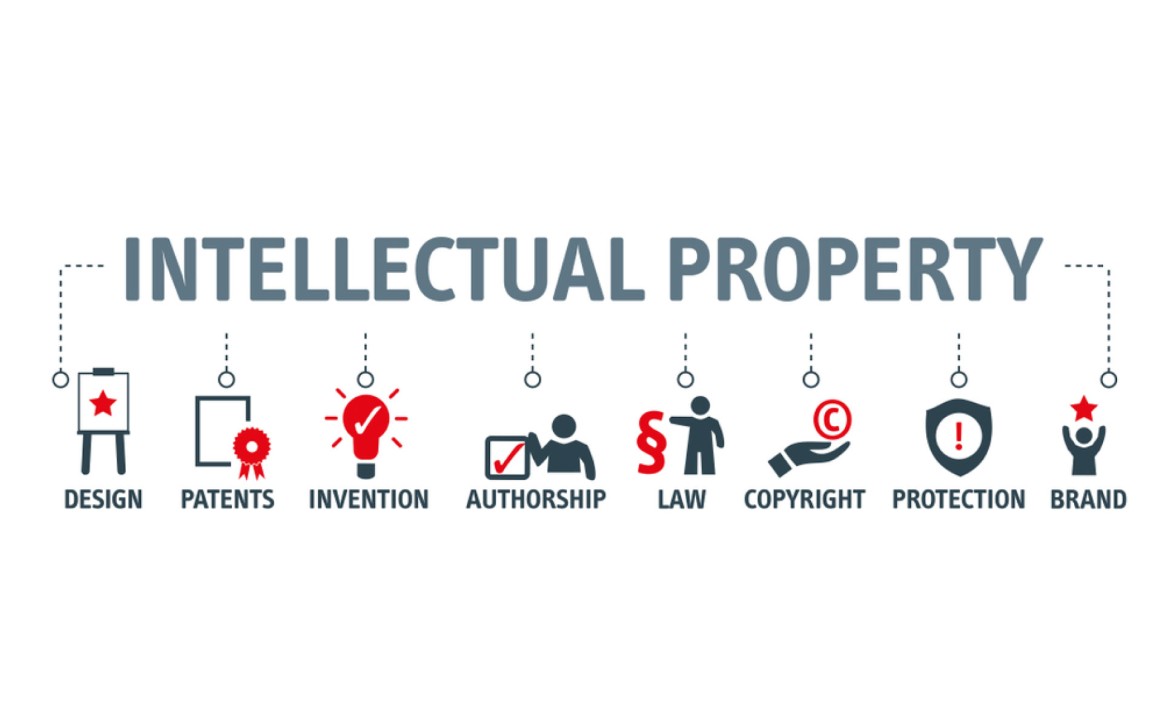
Photo credit: LinkedIn: Luiza Castro Rey
Intellectual Property
Intellectual property (IP) refers to the legal rights that protect creations of the mind, such as inventions, designs, brands, and artistic works. These rights allow creators to control how their inventions are used and to benefit financially from them. There are several types of intellectual property rights, including patents, copyrights, trademarks, and trade secrets.
Types of Intellectual Property
- Patents: Legal rights granted to inventors for their inventions, giving them exclusive rights to make, use, and sell the invention for a certain period of time.
- Industrial Designs Protect the visual design of objects, including their shape, pattern, and color. This type of IP ensures that the aesthetic aspects of a product are protected from imitation.
- Copyrights: Protect original works of authorship, such as literature, music, and art, giving creators exclusive rights to reproduce, distribute, and display their works.
- Trademarks: Protect brand names, logos, and slogans that distinguish goods or services from those of others.
- Trade Secrets: Protect confidential business information that provides a competitive advantage, such as formulas, processes, or customer lists.
Patents
WIPO(World Intellectual Property Organization) defines a patent as a right granted for an invention, which is a product or a process that provides, in general, a new way of doing something, or offers a new technical solution to a problem. A patent gives the inventor the right to exclude others from making, using, selling, or importing the patented invention without their permission for a limited period of time, usually 20 years from the filing date.
A patent needs to be filed individually in individual countries, there is no concept as a global patent. A patent filed in one region is only applicable in the jurisdiction of the region of filing. Therefore, to protect the rights of one's work in different regions/countries you need to file the patent sin those regions.
There are three types of patents:
Industrial Designs or Designs Patent
An industrial design may consist of three dimensional features, such as the shape of an article, or two dimensional features, such as patterns, lines or color.
In principle, the owner of a registered industrial design or of a design patent has the right to prevent third parties from making, selling or importing articles bearing or embodying a design which is a copy, or substantially a copy, of the protected design, when such acts are undertaken for commercial purposes.
Industrial designs are applied to a wide variety of products of industry and handicraft items: from packages and containers to furnishing and household goods, from lighting equipment to jewelry, and from electronic devices to textiles. Industrial designs may also be relevant to graphic symbols, graphical user interfaces (GUI), and logos.
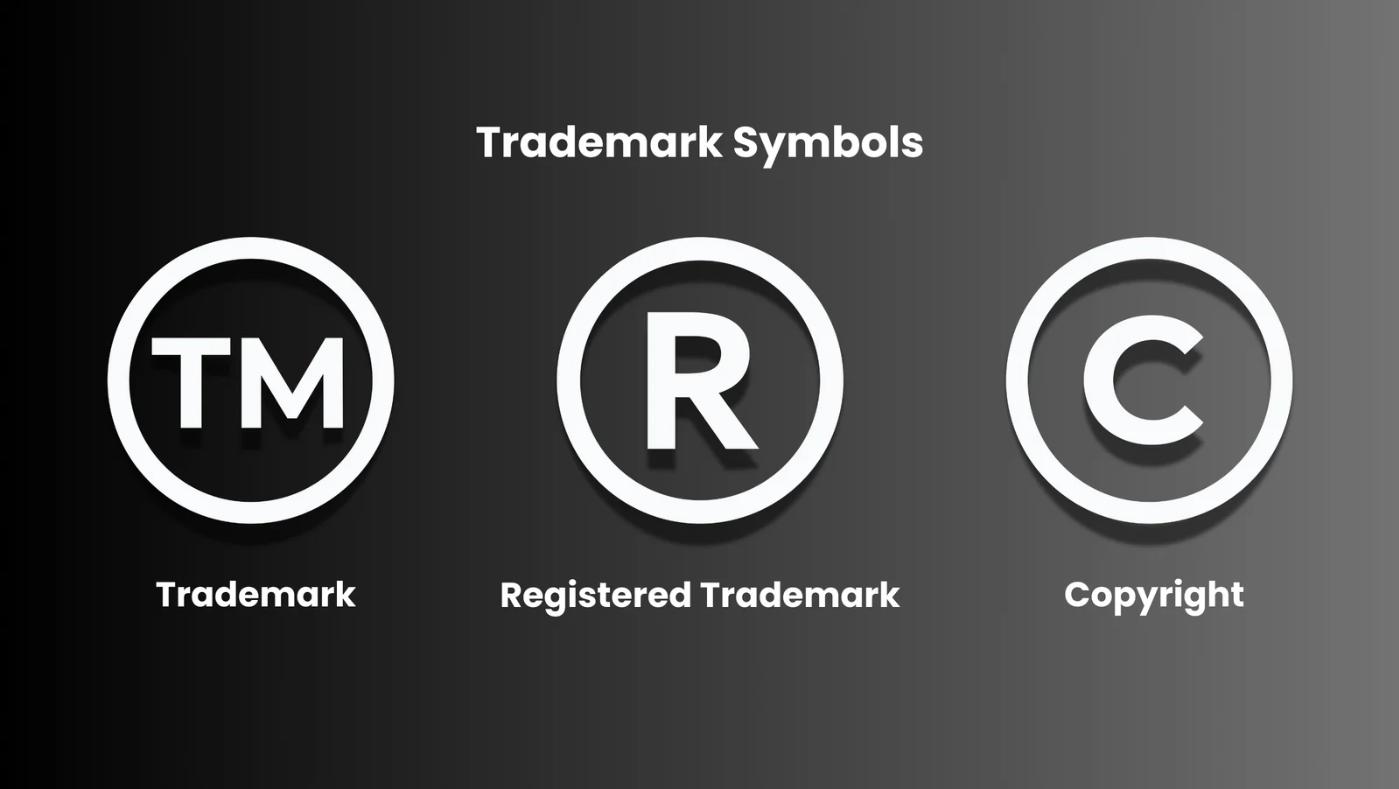
Photo credit: duranschulze
Copyrights
Copyright (or author's right) is a legal term used to describe the rights that creators have over their literary and artistic works. Works covered by copyright range from books, music, paintings, sculpture, and films, to computer programs, databases, advertisements, maps, and technical drawings.

Photo credit: Hartmans Law
Copyrights are applicable for creative works which might not be patentable usually
Trademarks
A trademark is a sign capable of distinguishing the goods or services of one enterprise from those of other enterprises. Trademarks are protected by intellectual property rights.
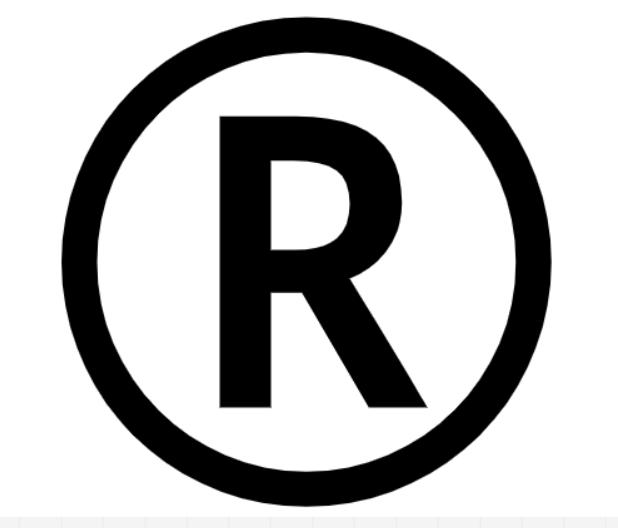
Photo credit: Hartmans Law
A word or a combination of words, letters, and numerals can perfectly constitute a trademark. But trademarks may also consist of drawings, symbols, three-dimensional features such as the shape and packaging of goods, non-visible signs such as sounds or fragrances, or color shades used as distinguishing features - the possibilities are almost limitless.
TM
The TM symbol indicates that the trademark owner has filed the application for registering the trademark with the registrar of trademarks. The owner can use the ™ symbol once the trademark application is submitted. It acts as a warning for the competitors that the trademark is under the process of registration and its infringement might lead to legal action after its registration.
R
The trademark owner can use the R symbol once the trademark is registered. The R symbol signifies that the trademark is approved and registered with the registrar of trademarks and is protected from infringement as per the Trademark Act, 1999. If any other person uses a registered trademark having the R symbol without the consent of the owner, he/she can be prosecuted for infringement. Having the R symbol next to the trademark before the trademark is officially registered is not permitted by law. However, if the trademark is registered, the trademark owner can use the symbol R with the trademark.
At the national/regional level, trademark protection can be obtained through registration, by filing an application for registration with the national/regional trademark office and paying the required fees. At the international level, you have two options: either you can file a trademark application with the trademark office of each country in which you are seeking protection, or you can use WIPO's Madrid System.
Trade Secrets
Trade secrets are intellectual property (IP) rights on confidential information which may be sold or licensed.
What qualifies as a trade secret?- In general, to qualify as a trade secret, the information must be:
- commercially valuable because it is secret,
- be known only to a limited group of persons, and
- be subject to reasonable steps taken by the rightful holder of the information to keep it secret, including the use of confidentiality agreements for business partners and employees.
Licensing
MIT License
The MIT License is a permissive software license originating at the Massachusetts Institute of Technology (MIT)[6] in the late 1980s.[7] As a permissive license, it puts very few restrictions on reuse and therefore has high license compatibility.
Unlike copyleft software licenses, the MIT License also permits reuse within proprietary software, provided that all copies of the software or its substantial portions include a copy of the terms of the MIT License and also a copyright notice. In 2015, the MIT License was the most popular software license on GitHub and was still the most popular in 2025.
License Terms
The terms can be found at https://opensource.org/license/mit. It has the following terms:
Copyright "YEAR" "COPYRIGHT HOLDER" Permission is hereby granted, free of charge, to any person obtaining a copy of this software and associated documentation files (the “Software”), to deal in the Software without restriction, including without limitation the rights to use, copy, modify, merge, publish, distribute, sublicense, and/or sell copies of the Software, and to permit persons to whom the Software is furnished to do so, subject to the following conditions: The above copyright notice and this permission notice shall be included in all copies or substantial portions of the Software. THE SOFTWARE IS PROVIDED “AS IS”, WITHOUT WARRANTY OF ANY KIND, EXPRESS OR IMPLIED, INCLUDING BUT NOT LIMITED TO THE WARRANTIES OF MERCHANTABILITY, FITNESS FOR A PARTICULAR PURPOSE AND NONINFRINGEMENT. IN NO EVENT SHALL THE AUTHORS OR COPYRIGHT HOLDERS BE LIABLE FOR ANY CLAIM, DAMAGES OR OTHER LIABILITY, WHETHER IN AN ACTION OF CONTRACT, TORT OR OTHERWISE, ARISING FROM, OUT OF OR IN CONNECTION WITH THE SOFTWARE OR THE USE OR OTHER DEALINGS IN THE SOFTWARE.
GPL
The GNU General Public Licenses (GNU GPL, or simply GPL) are a series of widely used free software licenses, or copyleft licenses, that guarantee end users the freedoms to run, study, share, or modify the software.The GPL was the first copyleft license available for general use.
License Terms
The license terms can be found at https://www.gnu.org/licenses/gpl-3.0.html. It has the following terms:
"one line to give the program's name and a brief idea of what it does." Copyright (C) "year" "name of author" This program is free software: you can redistribute it and/or modify it under the terms of the GNU General Public License as published by the Free Software Foundation, either version 3 of the License, or (at your option) any later version. This program is distributed in the hope that it will be useful, but WITHOUT ANY WARRANTY; without even the implied warranty of MERCHANTABILITY or FITNESS FOR A PARTICULAR PURPOSE. See the GNU General Public License for more details.
Creatives Common License
Creative Commons licenses give everyone from individual creators to large institutions a standardized way to grant the public permission to use their creative work under copyright law. From the reuser's perspective, the presence of a Creative Commons license on a copyrighted work answers the question, What can I do with this work?
Types of CC LicensesThere are six Creative Commons (CC) licenses. These CC licenses indicate the use parameters that have been granted by the content creator. The content creator still owns the copyright to that content, but through the selected CC license the creator is granting re-use of the content under the specified parameters. There is more on the history and uses of CC licenses on the Creative Commons Website.
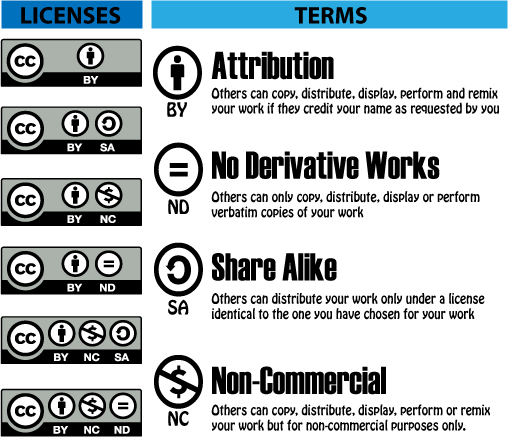
Photo credit: Longwood University
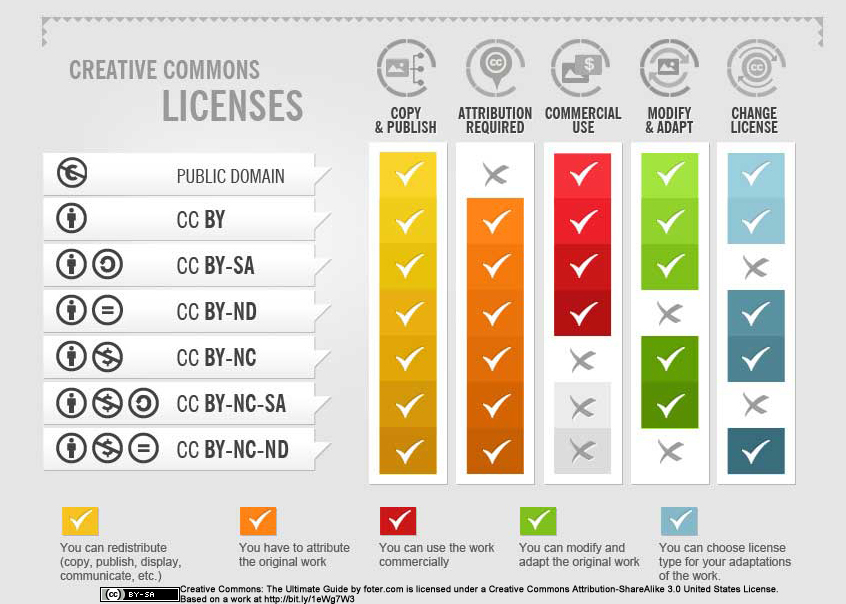
Photo credit: University of Pittsburgh Library System
Choosing a license
I want to choose a CC BY-NC-SA license for my final project. This license allows others to use, share, and adapt my work for non-commercial purposes, as long as they give appropriate credit and share their adaptations under the same license. This way, I can ensure that my work is accessible to others while still retaining some control over its use.
CC License ChooserYou can use the CC License Chooser from the above link to find the right license and use it for use case.
If you know the type of license to choose go forward and select the option yes for the first question and if you don't know it will help you to find the right choice.
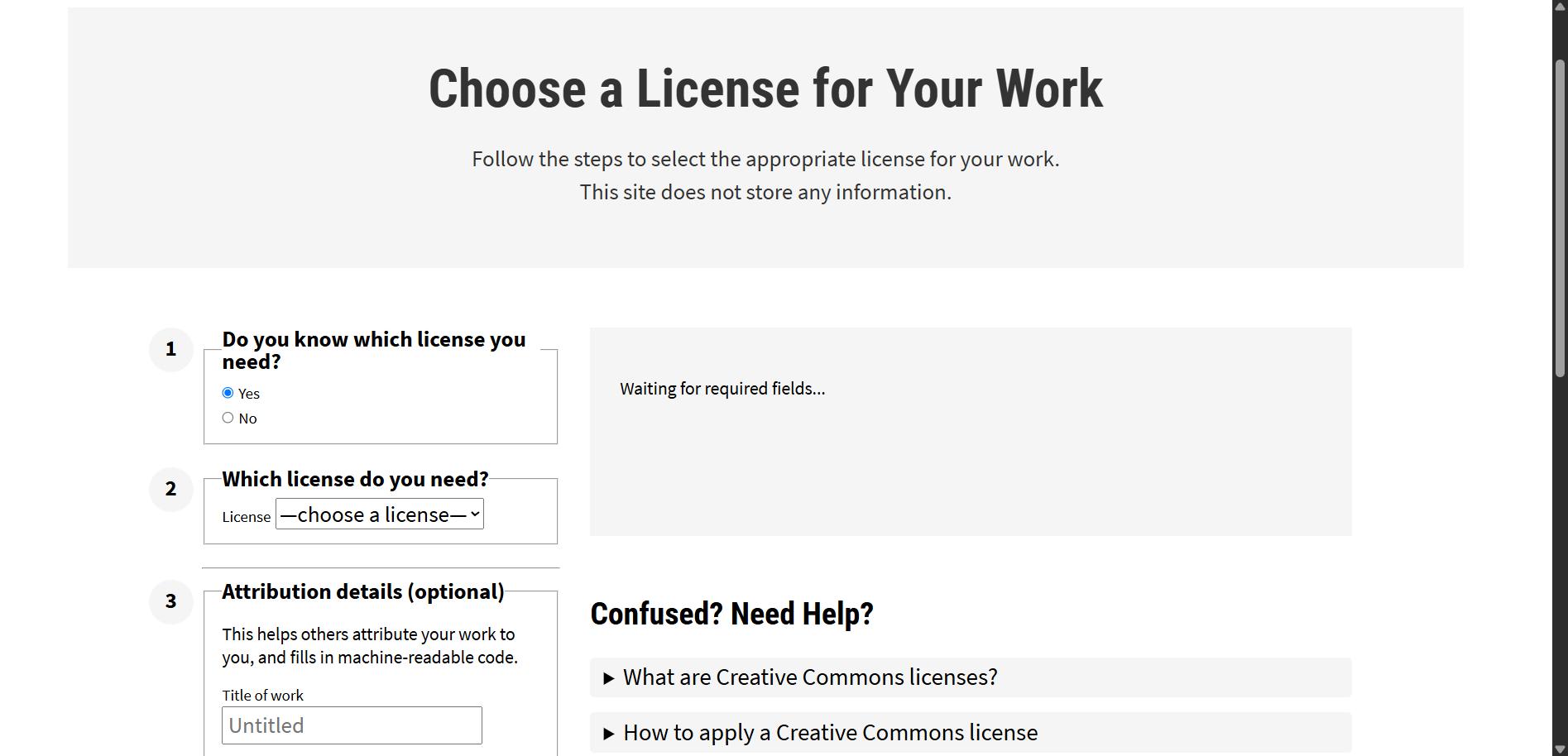
Select the licensse of your choice from the list of options. i have selected the CC-BY-NC-SA 4.0
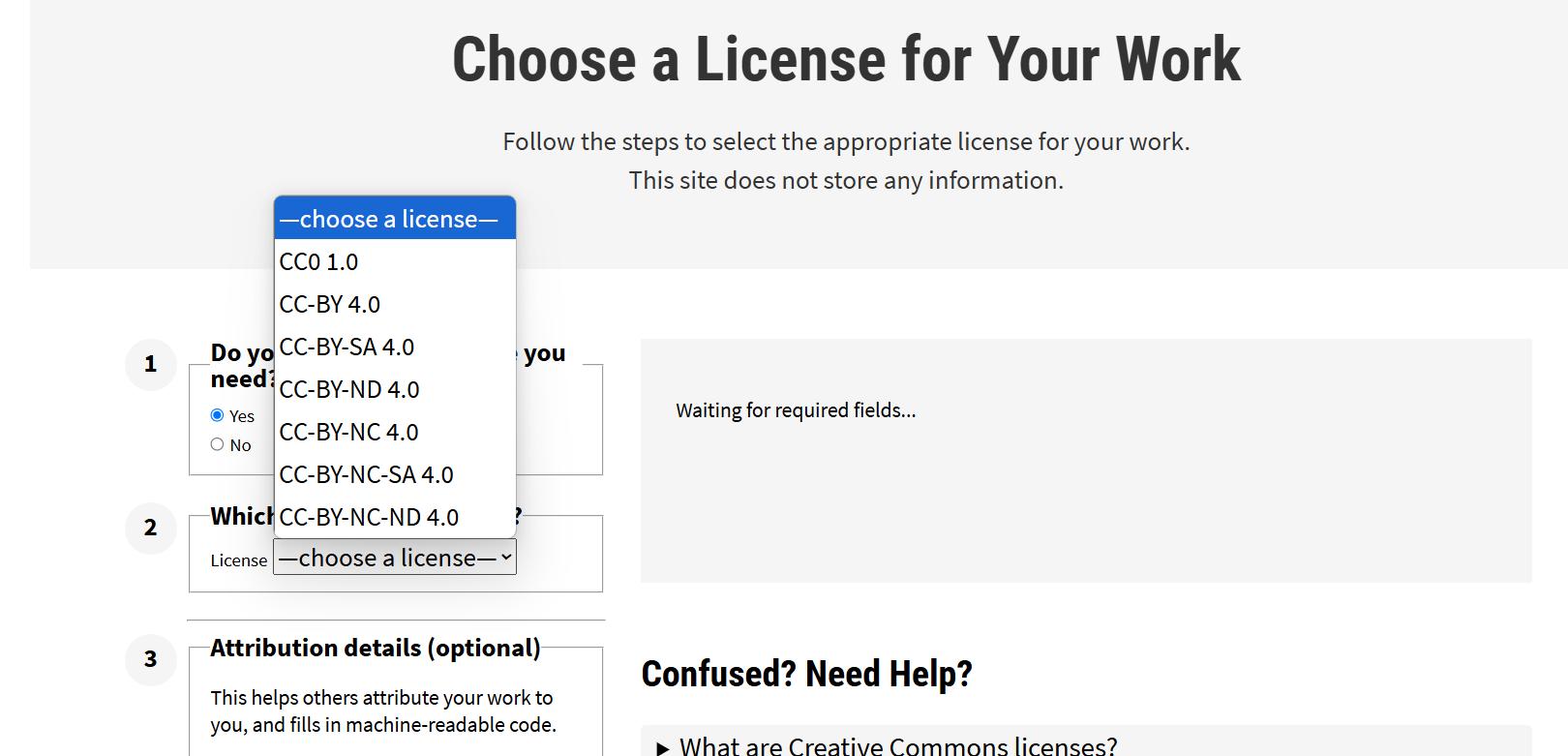
Adding the attribution details is optional. Here, I have added Title of Work, Creator Name(My Name), Link to work, Link to Creator Profile and the Year of Creation
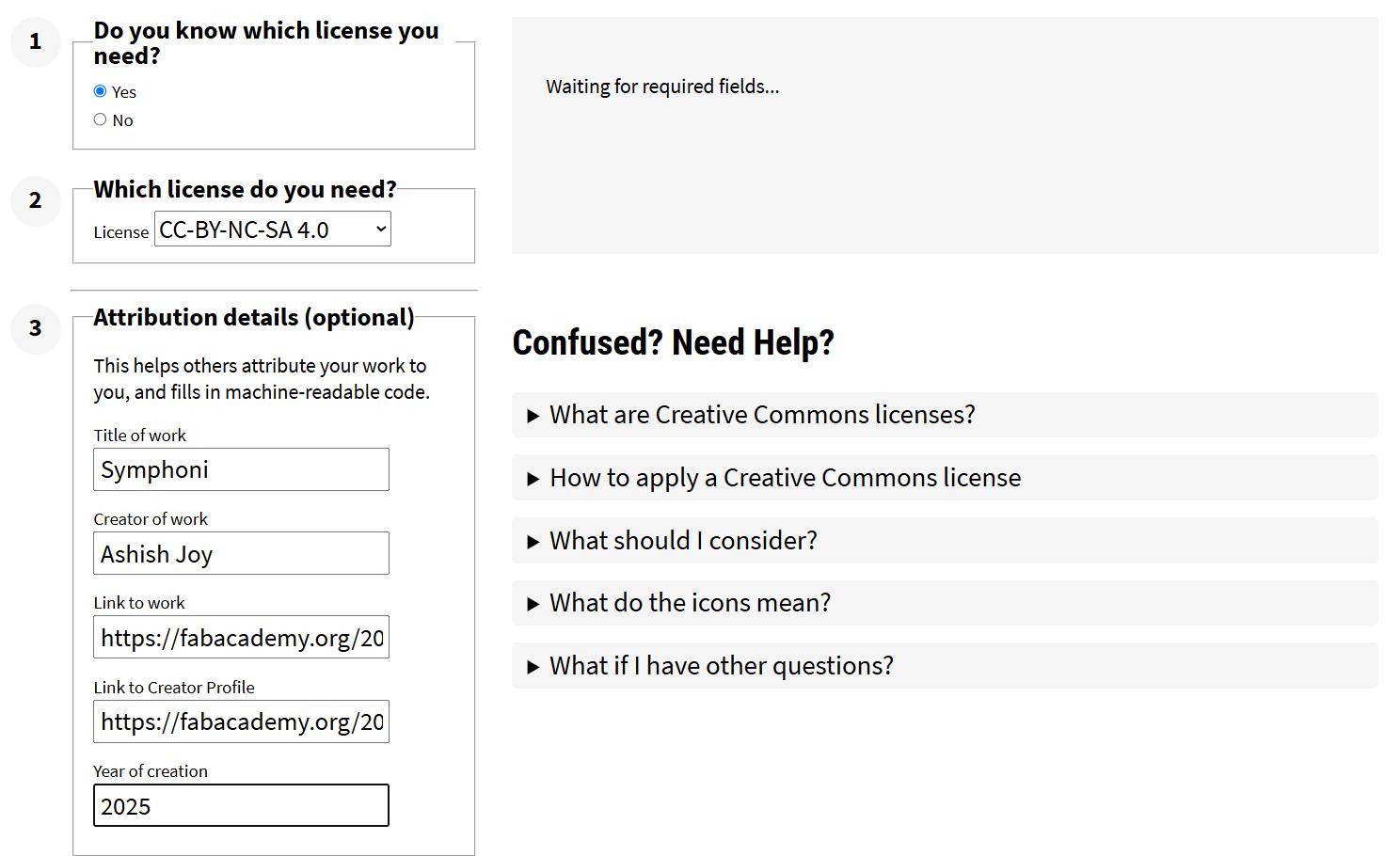
The License Rich Text or HTML Code can be obtained from the
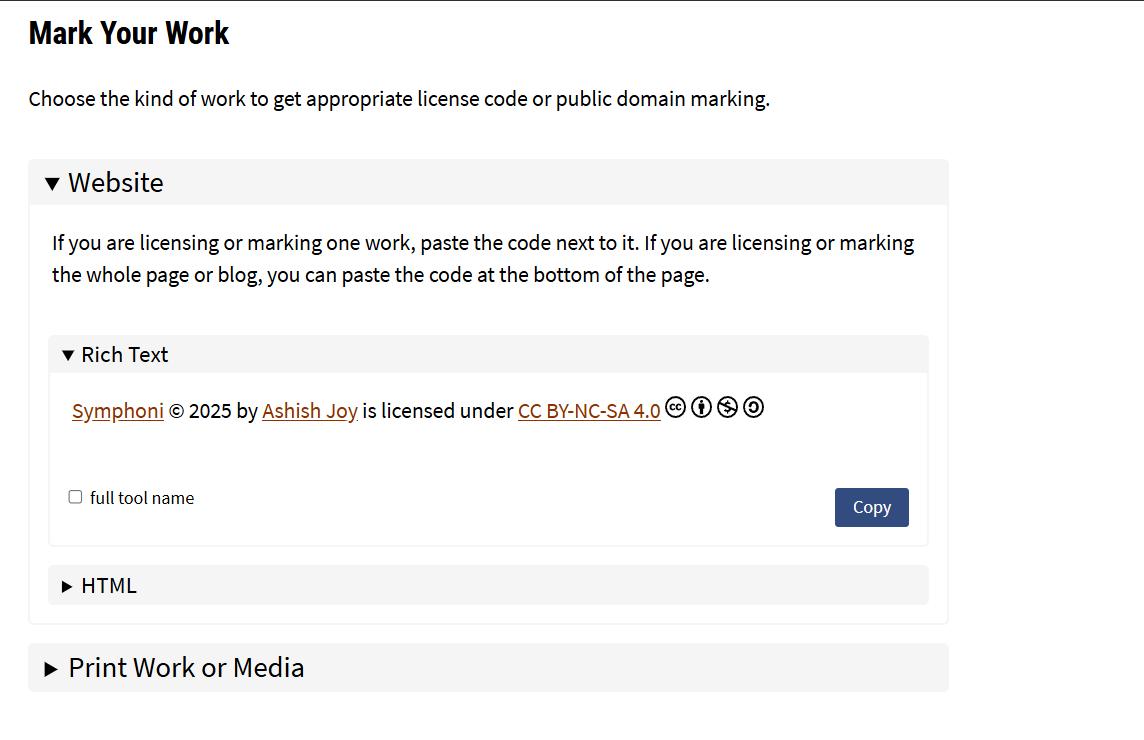
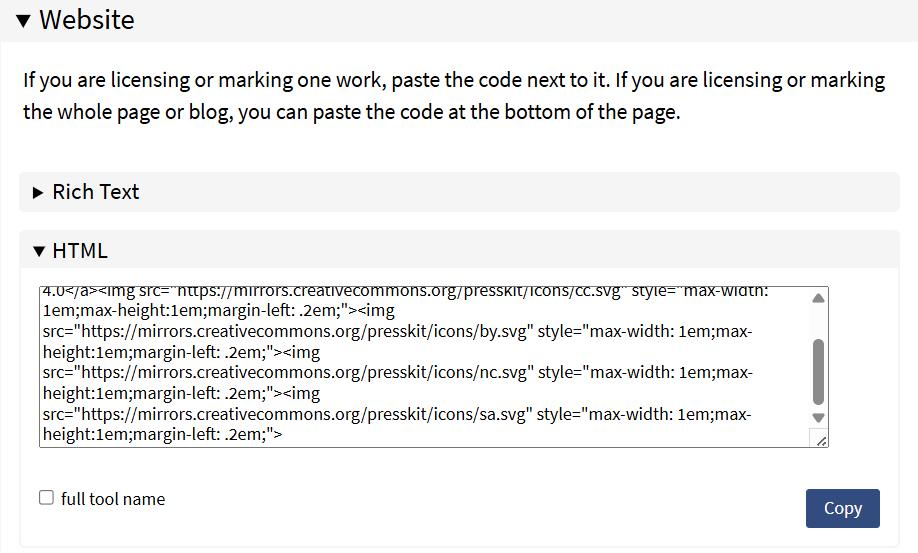
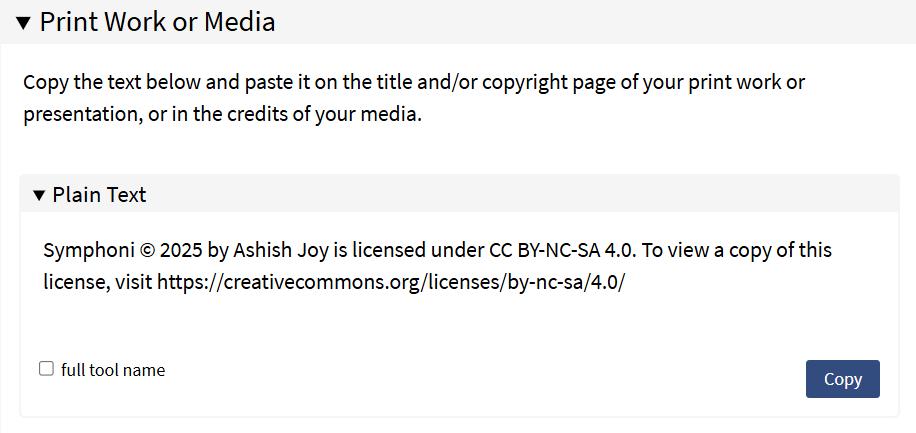
Now I can use the below license in my work and my final project "Symphoni".
Symphoni © 2025 by Ashish Joy is licensed under CC BY-NC-SA 4.0Dissemination of Project
Dissemination of a project refers to the process of sharing the project's results, findings, and outcomes with a wider audience. This can include stakeholders, the public, and other interested parties. Effective dissemination is crucial for maximizing the impact of a project and ensuring that its benefits are realized by those who can use or build upon its results.
My plan of dissemination is to keep the project open source under the CC-BY-NC-SA 4.0 license as per the scope of Fab Academy. The project files will be available on my gitlab and github. I will be shooting a video showcasing my build and posting it on youtube and other social media platforms.
